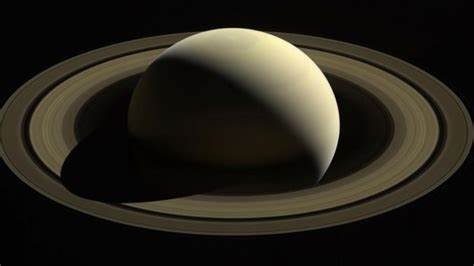A recent study led by physicist Sascha Kempf from the University of Colorado Boulder has provided compelling evidence suggesting that Saturn’s rings are much younger than previously believed. Published in the journal Science Advances, the research indicates that the age of Saturn’s rings is no more than 400 million years, significantly younger than the planet itself, which is estimated to be around 4.5 billion years old.
For centuries, scientists have been puzzled by the origins of Saturn’s rings. However, Kempf and his team have shed light on the issue by focusing on an unexpected subject: dust. By studying the buildup of dust on Saturn’s rings, akin to determining the age of a house by examining the dust on its surfaces, the researchers were able to estimate the age of the rings.
Over a span of 13 years, from 2004 to 2017, the team utilized the Cosmic Dust Analyzer on NASA’s Cassini spacecraft to analyze tiny grains of dust around Saturn. Although they only collected 163 dust grains from beyond the planet’s vicinity, the researchers were able to make calculations that suggested the rings have been accumulating dust for a few hundred million years.
This revelation implies that Saturn’s rings are relatively new phenomena in the grand cosmic scale, appearing and potentially even disappearing within a relatively short period. While this study offers closure regarding the age of the rings, it does not provide an explanation for how they formed initially.
The observation of Saturn’s rings dates back over 400 years when Galileo Galilei first spotted them through a telescope. However, it was not until the 1800s that James Clerk Maxwell theorized that the rings consisted of individual pieces rather than a solid structure.
Previously, scientists believed that the rings formed simultaneously with Saturn itself. However, the remarkably pure composition of the rings, comprising approximately 98% water ice and minimal rocky matter, challenged this hypothesis.
The findings from the Cassini spacecraft, which collected data on Saturn until 2017, have been instrumental in determining the age of the rings. Furthermore, NASA’s upcoming Europa Clipper mission will feature a more advanced dust analyzer designed by researchers at the University of Colorado Boulder.
Interestingly, it has been suggested that Saturn’s rings may be gradually disappearing, with the ice particles falling onto the planet’s surface. This raises the question of why these ephemeral features exist at a time when they can be observed by scientists. The study highlights the need to unravel the enigma of how Saturn’s rings formed, considering their potential transience and the fortuitous timing of their visibility.
In conclusion, the study led by Sascha Kempf and his team provides strong evidence indicating that Saturn’s rings are much younger than previously thought, posing a solution to a long-standing scientific puzzle. While the age of the rings has been determined, the question of their origin remains unanswered, leaving scientists eager to explore further and unlock the secrets of these captivating celestial formations.

